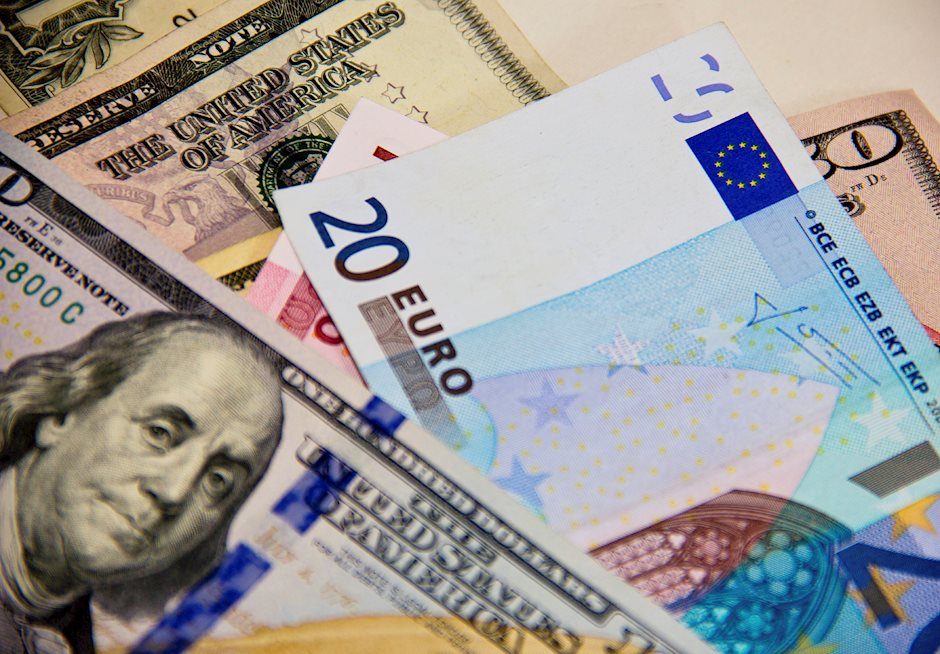EUR/USD depreciates to yearly lows near 1.0450, awaits PMIs from both nations
- EUR/USD continues to lose ground as the US Dollar appreciates due to the increasing likelihood of slower Fed rate cuts.
- The Euro weakens as the ECB is anticipated to reduce Deposit Facility Rate by 25 basis points in December.
- The US Dollar Index hovers near its recent yearly high of 107.15, which was recorded on Thursday.

EUR/USD remains on a downward trend for the third consecutive session, hovering around 1.0470 during the Asian trading hours on Friday. The pair dropped to a low of 1.0462 on Thursday, a level not seen since October 2023. This decline is driven by the Euro's weakness, fueled by expectations that the European Central Bank (ECB) may speed up its policy easing.
The ECB is broadly expected to reduce its Deposit Facility Rate by 25 basis points (bps) to 3% during its December meeting. Market participants also anticipate that the ECB will move toward a neutral policy stance more rapidly in 2025, amid growing concerns about the Eurozone’s economic outlook.
Traders are awaiting the release of the Eurozone HCOB Purchasing Managers Index (PMI) data for November on Friday. The Pan-EU Manufacturing PMI is expected to remain flat at a contractionary 46.0, while the Services PMI is projected to rise slightly to 51.8 from 51.6.
Attention will then shift to the US S&P Global PMI data, set to be released later in the North American session. The US Manufacturing PMI for November is forecast to increase to 48.8 from 48.5, while the Services PMI is expected to rise to 55.3 from 55.0.
The US Dollar Index (DXY), which measures the USD against a basket of major currencies, trades near 107.00, just below its recent yearly high of 107.15 reached on Thursday. The US Dollar gained strength following the release of last week's Initial Jobless Claims data.
US Jobless Claims dropped to 213,000 for the week ending November 15, down from a revised 219,000 (previously 217,000) in the prior week and below the forecast of 220,000. This development has sparked speculation that the pace of Federal Reserve rate cuts could slow.
Euro FAQs
The Euro is the currency for the 19 European Union countries that belong to the Eurozone. It is the second most heavily traded currency in the world behind the US Dollar. In 2022, it accounted for 31% of all foreign exchange transactions, with an average daily turnover of over $2.2 trillion a day. EUR/USD is the most heavily traded currency pair in the world, accounting for an estimated 30% off all transactions, followed by EUR/JPY (4%), EUR/GBP (3%) and EUR/AUD (2%).
The European Central Bank (ECB) in Frankfurt, Germany, is the reserve bank for the Eurozone. The ECB sets interest rates and manages monetary policy. The ECB’s primary mandate is to maintain price stability, which means either controlling inflation or stimulating growth. Its primary tool is the raising or lowering of interest rates. Relatively high interest rates – or the expectation of higher rates – will usually benefit the Euro and vice versa. The ECB Governing Council makes monetary policy decisions at meetings held eight times a year. Decisions are made by heads of the Eurozone national banks and six permanent members, including the President of the ECB, Christine Lagarde.
Eurozone inflation data, measured by the Harmonized Index of Consumer Prices (HICP), is an important econometric for the Euro. If inflation rises more than expected, especially if above the ECB’s 2% target, it obliges the ECB to raise interest rates to bring it back under control. Relatively high interest rates compared to its counterparts will usually benefit the Euro, as it makes the region more attractive as a place for global investors to park their money.
Data releases gauge the health of the economy and can impact on the Euro. Indicators such as GDP, Manufacturing and Services PMIs, employment, and consumer sentiment surveys can all influence the direction of the single currency. A strong economy is good for the Euro. Not only does it attract more foreign investment but it may encourage the ECB to put up interest rates, which will directly strengthen the Euro. Otherwise, if economic data is weak, the Euro is likely to fall. Economic data for the four largest economies in the euro area (Germany, France, Italy and Spain) are especially significant, as they account for 75% of the Eurozone’s economy.
Another significant data release for the Euro is the Trade Balance. This indicator measures the difference between what a country earns from its exports and what it spends on imports over a given period. If a country produces highly sought after exports then its currency will gain in value purely from the extra demand created from foreign buyers seeking to purchase these goods. Therefore, a positive net Trade Balance strengthens a currency and vice versa for a negative balance.
Author

Akhtar Faruqui
FXStreet
Akhtar Faruqui is a Forex Analyst based in New Delhi, India. With a keen eye for market trends and a passion for dissecting complex financial dynamics, he is dedicated to delivering accurate and insightful Forex news and analysis.

















